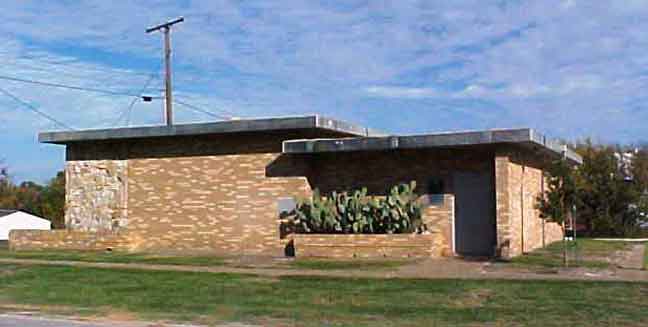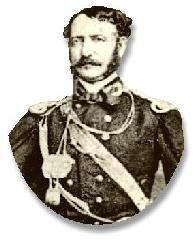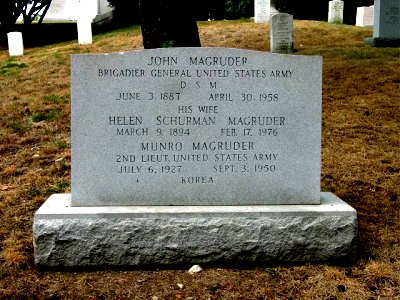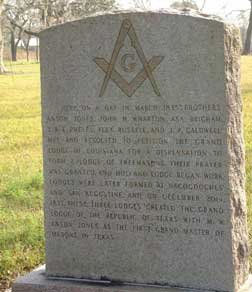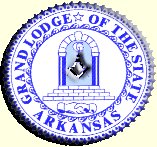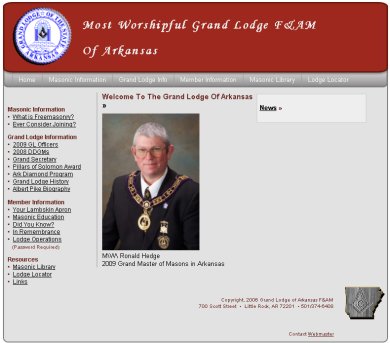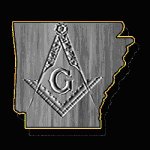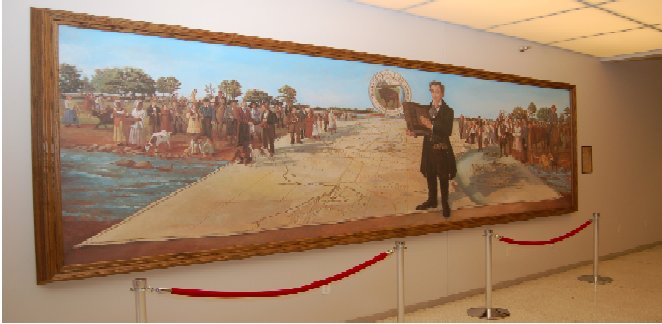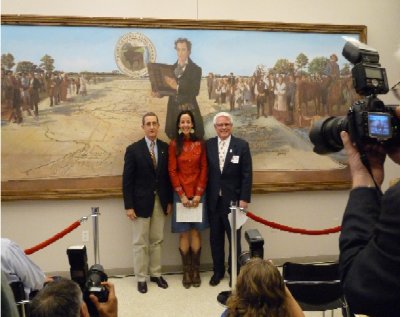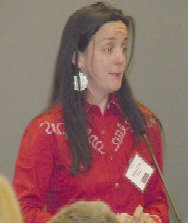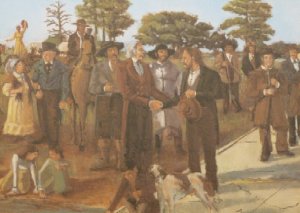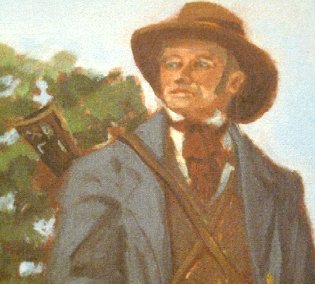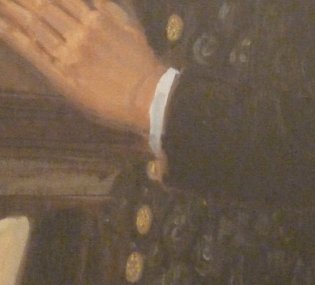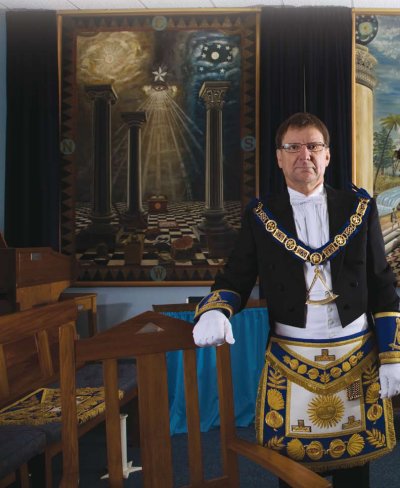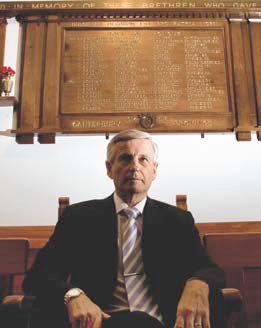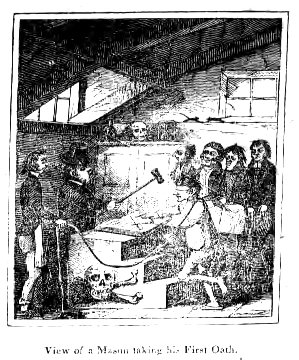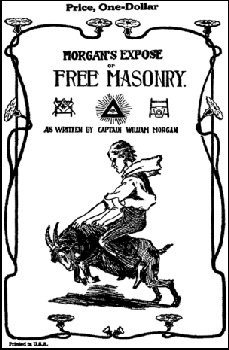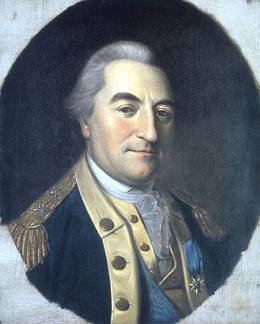
|
August 2009

The Lee Masonic Lodge
No. 435 AF & AM
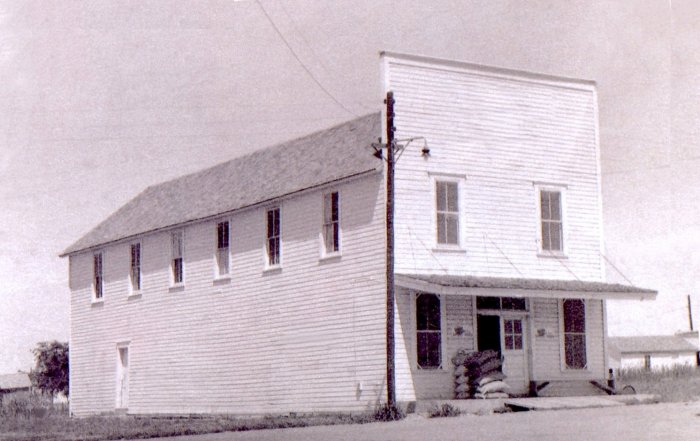 The Lee Masonic Lodge Building In Prosper Texas 1904-1967 |
|
Page II | |||||||||
|
This Small Town Texas Mason's E-Magazine is not affiliated with any state Grand Lodge or individual Blue Lodge. It was created to enlighten, educate and entertain Masons and non-Masons alike and as title suggests, it does feature a small town Texas Masonic Lodge and a story of Texas Masonic history in each issue
A very sincere effort was made to avoid using any copyrighted material, without permission or giving credit to the author, in the creation of this web site. If you discover something that is yours, without giving you due credit, please let me know and due credit will be given or the item will be replaced.
Any material in this site may be used to increase the understanding of Freemasonry.
Story tools: |
Lee Masonic Lodge No. 435 AF & AM
When the War Stood Still in Galveston
A Tour Of The American Grand Lodges Series
My Brother's Keeper. Open Racism In Georgia Freemasonry.
| ||||||||
|
Page V | ||
When the War Stood Still in Galveston by Duncan Howard, PGM Reprint From The Texas Mason, Spring 1994
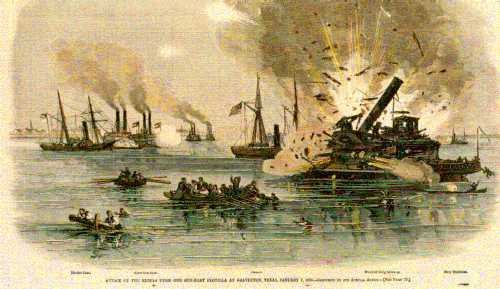
The recapture of Galveston by Confederate forces is little known in the annals of war. But Masons, wherever dispersed, take a special pride and share a certain feeling when the war stood still in Galveston while Worshipful Master Philip C. Tucker, Jr. opened Harmony Lodge No. 6 and conducted the Masonic burial of a Northern Brother, "appreciating the spirit and force of Masonic ties." It is a Masonic legacy for all Masons to cherish until time shall be no more. By way of background, the Union Navy established a blockade of Port Galveston on October 6, 1862. Later, on Christmas Day, Federal troops landed and placed the entire island under Northern control. In the meantime, Texas gained a battle-tested hero as Confederate General John Bankhead Magruder, nicknamed "Prince John" for his dramatic flair and goldbraided pomp, was transferred to command the War Department of Texas, New Mexico and Arizona on October 10, 1862.
When General Magruder arrived in Texas, he recognized that the economy of the state was held hostage by Union blockades along the Texas coast and immediately planned a land/sea attack to retake Galveston Island. In preparation, two small steamboats -the Bayou City and the Neptune - were fitted with guns and armored with bales of cotton which Magruder said gave "an appearance of protection" to the volunteers who manned them. Then, under cover of New Year's Eve night of 1862, the cotton-clad boats with makeshift tenders cruised to rendezvous with eight Northern ships in Galveston Harbor. At the same time a land force of Texas volunteers secretly crossed Galveston Bay on the railway bridge that still connected the island to the mainland and stationed themselves in a semicircle around Kuhn's Wharf where Union troops were garrisoned. No doubt, the Union soldiers were startled from sleep about three o'clock in the morning on New Year's Day, 1863, when General Magruder fired the first cannon shot as a signal for the Battle of Galveston to begin. After firing the cannon, a little of "Prince John" slipped out as a jovial Magruder remarked to his closeby troops, "Now I've done my duty as a private and I will go now and attend my duties as a General." The outcome of the battle centered around the Union ship Harriet Lane, a copper-sheathed gunboat commanded by Commander Jonathan Mayhew Wainwright, Jr., the forty-one year old son of Protestant Episcopal Bishop Jonathan Mayhew Wainwright, Sr. of New York and the grandfather of Masonic General Jonathan Mayhew Wainwright III of World War 11 fame. The second in command was Lieutenant Commander Edward Lea, a graduate of the United States Naval Academy, Annapolis, Md., in 1855, and a family relation of Margaret Moffette Lea Houston, wife of the Masonic General Sam Houston. Upon entering the harbor, the Bayou City and Neptune opened fire and attempted to ram the Harriet Lane. The Harriet Lane returned fire in like kind and sank the Neptune in the shallow bay. Finally, the Bayou City managed to ram the Harriet Lane in such a way that the vessels locked together. At this time the Harriet Lane was boarded and captured during hand-to-hand combat. Following the seizure of the Harriet Lane, a flag of truce was sent to the Union Commodore Renshaw whose flagship Westfield had run aground. In truce, General Magruder demanded surrender of the entire fleet and gave three hours for consideration, After demands were met, the Northern ships were brought to anchor, flying the white flags of truce. In this interim, Commodore Renshaw was killed in an explosion that he set to scuttle his flagship Westfield and the Union gunboats, Clifton and Owasco, steamed from the harbor with their white flags still flying. Seeing they were abandoned by their fleeing fleet, the Union soldiers fighting at Kuhn's Wharf accepted unconditional surrender. The Battle of Galveston was over and the Island remained in Southern control until the end of the Confederate Nation. At the time the Confederates boarded the Harriet Lane both Wainwright and Lea refused to surrender and both fought valiantly to save their ship. Commander Wainwright sustained injuries to his head and left thigh before he was killed by a shot to the head from the Mason, Commodore Leon Smith, Commander of the Bayou City and a brother of Past Grand Master of Indiana Caleb B. Smith who served as Secretary of the Interior in Lincoln's first cabinet. Mortally wounded, Lieutenant Commander Edward Lea lay dying on the ship deck. When the Confederate Major Albert Miller Lea boarded the ship, he recognized his son Edward, whom he had not seen since the war began, and rushed to comfort him. As he knelt by his son, Edward, barely conscious, whispered to a shipmate, "My father is here." Then, he died. Masonic prisoners from the Harriet Lane vouched to Confederate Masons that Wainwright was a Mason in good standing. Although they asked nothing for themselves, they requested a Masonic burial for their late Commander and Masonic Brother. When this information reached Philip C. Tucker, Jr., a Major on Magruder's staff and Worshipful Master of Harmony Lodge No. 6 in Galveston, plans were made to open the Lodge for Masonic burial. As soon as Brother Tucker reported to the Confederate headquarters located in the Roman Catholic Bishop's palace, General Magruder accosted him with: "Major Tucker, I hear you intend to bury the remains of Commander Wainwright tomorrow with Masonic honors. Is this true?" Major Tucker saluted and answered, "Yes, Sir. And I hope General Magruder will give it military honors." The reply was, "Who in H--l ever heard of burying a dead enemy with Masonic and military honors?" The response was, "General Magruder, when Lieutenant Colonel Rogers of the Second Texas fell, the Federal authorities gave the body Masonic and military burial (unconfirmed), and it is said that you are never to be outdone in courtesy to a friend or enemy." The rebuttal was, "Not by a d---d sight. Colonel DeBray (a Mason and former Secretary of Austin Lodge No. 12), turn out your regiment for escort duty tomorrow at the Masonic burial of Lieutenant Commander Wainwright of the Harriet Lane." On January 2, 1863, Harmony Lodge opened and resolved, "that the members of this Lodge, appreciating the spirit and force of Masonic ties, will not allow their feelings and prejudice and love of righteous cause to obliterate from their hearts and minds the merciful teachings of the Order; that it does not conflict with their duties as patriotic citizens to respond to calls of mercy by a prostrate political foe, or to administer the last rite of the Order to the remains of a Mason of moral worth, although yesterday they met as an armed enemy in mortal combat in which the deceased parted with his life-. . . . " Continued On Page VI
|
|
PageVII | ||
The Grand Lodge of Arkansas
Reprinted With Permission Of The Author
The Grand Lodge of Arkansas is the next stop on the tour of American Grand Lodges.
Arkansas Masonic membership:
Data from MSANA
State population: 2,834,797 as of 2007 (estimated),
About the Grand Lodge:
The Grand Lodge of Arkansas does not have a listing on Wikipedia.
"Organized Masonry came to Arkansas soon after the formation of the Arkansas Territory in 1819. The first lodge was established at Arkansas Post, the seat of the new Territorial Government, under a dispensation by the Grand Lodge of Kentucky. By 1819, Arkansas Post was a village of about one hundred persons. Since Masonry had been active for a long time in the older states east of the Mississippi, it was quite natural that some of those coming to Arkansas Post would be members of the Masonic Fraternity. Many of them were prominent in the affairs of the Territorial Capitol, and as a result of their efforts, a Masonic Lodge was established there. No records remain of that Lodge except the scattered entries in the Proceedings of the Grand Lodge of Kentucky from whom the dispensations, and later a charter, were obtained".
From the Grand Lodge website on Freemasonry in Arkansas
Some of what I found on my visit:
URL: The Grand Lodge of Arkansas has a very straight forward URL at http://www.argrandlodge.org which easily appears on a quick search at Google. The URL is clever in that it implements the short AR U.S. Post Office abbreviation for the state which is a very utilitarian approach to a field that it otherwise saturated with non state specific names.
Built in one of the most scalable formats with navigation across the top and on the left side, the site can go a long way in adding future content. On the top navigation, there are a number of drop down tabs that a visitor can follow to their destination pages which emulates the side navigation (except when encountering password controlled lodge operations pages).
The site overall all has a good look and feel. Once the visitor gets into the navigation pages, they are treated to a variety of content anchored with images and icons. Unfortunately there was a lack of uniformity to the artwork and the various icon art the quality and tone detracting from the authoritative red/grey/and black color scheme.
On the front of the site, there is a great depth of navigation but not much to connect it visually to the state. Unlike the Grand Lodge of Arizona, with their immediate extensive use of imagery, here we find the opposite, in that there is no real visual connection to the state other than a small silhouette logo on the bottom right corner.
Informational Content:
I did find that the site has a lot of information in it. My favorite bits included the biography of Albert Pike and the well developed history of the Grand Lodge. Both of these elements added a great deal of depth, and give an impression of its connectivity to the fraternity.
Additionally, there is a great wealth of information for new Masons under the education link including break downs of the various Masonic symbols. This is a great asset that any visitor could make use of, particularly brothers from that state. The educational snippets, Awards programs, and the charitable endowment plans are good ways to let the membership know what is going on and how they can interact.
However, as the site has a lot of good Masonic information, it is very light of any conversion mechanism, meaning that for as much as any Masonic visitor would find the information interesting there isn't much to showcase to a young first time visitor who may have an interest what Arkansas Masonry is about. On one hand, this seems to support the word of mouth development, but in an age increasingly shopping on line first, the site disengages the new or first time visitor with a lot of information.
At the bottom of the left side navigation is the sites links page, with images to the appendant bodies and various organizations important to the state. It was good to see that the Grand Lodge recognized many of the various groups and listed them so a user could quickly click in and check them out. Some of the interesting links I found were the Ruffian Chapter of the Order of the Widow's Sons (a Masonic motor cycle club), and the Scimitar Shrine of Little Rock. The links pages use of images in the navigation, I think, is a dynamic way to entice the viewer to look deeper into the content.
One thing I did not see was a page dedicated to contacting the Grand Lodge. The site does include its contact information at the bottom of each page with the address and phone number, but it limits users who want to send an electronic correspondence, unless it is to the webmaster. The quickest remedy to this is to add a page that could include addresses, maps, contact names, numbers, and email, and so on. Ideally this would also be in the mix of the top level navigation.
Calendar/Events/Call to Action:
The troubling thing I noticed right off was that the front page news tab was devoid of any news. This seems a natural place to include upcoming calendar items and events. As I ventured through the site, I did not easily find the calendar of activities around the state, or any informational mentioning anything that was going. Once at the calendar (located in the General Grand Lodge Links) I found a wide variety of information, from degrees, conferences, educational programs, banquets and so on. From a visitor stand point, because of its location, it leaves one wondering what to do when visiting or traveling to the state and it is not until after significant searching (clicking) that its activities became obvious. From an organizational stand point, the calendar would be an excellent inclusion for the front page news or to be grouped with the news so that it is easier to find.
Overall:
Generally, the sites informational content is good, and goes a long way to communicate to the membership about the Grand Lodge and its operations. But it does not address clearly the how and why to become a Mason efficiently, in that where it does go into detail it is to much information. It definitely gives a rich textual experience of what the state offers but misses tying it into some visual aspects of the state.
From the first time visitor stand point the site does not immediately engage with any conversion mechanism (look, click, sign-up). That may be overstating the purpose of the site, but it does not seem to take into consideration the non Mason who may visit with a keen interest to find out about Arkansas Masonry. As a quick comparison, the link mentioned above to the Scimitar Shrine is a very advanced and developed site with video and some interactivity which may be a glimpse into the level of importance (value) that the bodies place in their activities.
As a visiting Mason, the site is enjoyable and does entice additional time spent to look at its wealth of resources and goings on to get a feel for what Masonic life is like there. As a visiting non Mason, it definitely leaves me wondering why becoming a Arkansas Mason is valuable. |
|
Page VIII | |||
"Devoting itself almost entirely to legislation and to tite administration of its laws, to the settlement of differences between Breihirn on Masonic points and the inanagentent of its finances. Grand Lodge does little or nothing to instruct in the practice and history of Masonry " Source: Brother Murray Lyon, ss Grand Secretary in his History of No 1
There are a number of points to consider here. Does regular Freemasonry (Grand Lodges in the UK) satisfy the needs of the brethren? With so many brethren complaining about Grand Lodge then perhaps the answer is No!
Grand Lodge (GL) going by the statement by Brother Lyon is all about money. Ft is a costly organisation to administer, from the maintenance of its premises in Edinburgh to the responsibility of paying salaries to its full time employees.
However, at a recent GL Communication, it was pleasing to hear that a significant sum of money is being accrued by renting the building out to various users, something that is long over due and perhaps a consideration that should be looked into by all lodges who own their building as a means of augmenting their income to pay their just and lawful dues.
Many Provincial Grand Lodges are no more than meddlers and provide little tangible assistance to struggling lodges. Is it now the time for daughter lodges to look elsewhere for governance by looking instead to a GL or even a Grand Orient (GO) that will not bleed us dry?
Nowadays many lodges (ourselves included) arc struggling to pay the capitation fees levied by GL on its membership (perhaps a "Subject" for future comment). Is it any wonder that life members appear to be mysteriously dying of in droves in so many of the daughter lodges?
A question which is rarely asked: does GL ever offer loans to lodges to, for example, repair a roof? GL is raising money for the refurbishment of the organ which may indeed be a very fine musical instrument, but how many brethren have heard it more than a handful of times?
Sadly in this day and age, at a time when the economy is on the verge of going into a recession it is right and proper that the lodges in the Scottish Constitution (GL included) should be prudent with their financial resources. An unfortunate side effect of whkh, is one in which we appear to be getting further and further away from practising traditional Freemasonry and more and more towards an essential priority - raising funds to survive.
Would GL ever think of operating from various lodge rooms throughout Scotland and selling of f its head quarters in George Street in Edinburgh?
OK, perhaps we are a tad to radical in our thought process, alternatively though, why not once year or even every two years, have a large meeting outside Edinburgh on a Saturday in a location such as a concert hall, or the likes of the SECC etc, where more than a thousand
masons could attend?
Placing Brother Lyon's financial concerns aside let us now address what he says is the lack of instruction about the practise and history of Freemasonry - Us wonderful traditions.
Perhaps a return to a more esoteric approach in Freemasonry which is lead by a GL is necessary - very little comes from GLs in this sense. Why not? Should GL not be more proactive in encouraging the Brethren to think more about the Craft and its invaluable teachings? The reading of the Aims and Relationships at an annual installation is about as good as it gets when it comes to GL imparting the philosophy of the craft - however that is a bone of contention for many Brethren and perhaps another "subject for comment" at a future date.
Reading our article above, we maybe perceived by some, to come across as being somewhat disparaging towards some Provincial Grand Lodges - our comments were purely about the financial aspects affecting Scottish Freemasonry and the inability which precludes them ( PGL) at this time from granting any significant financial assistance to daughter lodges and not to the promotion of the philosophic lessons behind the meaning of our ritual. Therefore in the spirit of fairness we do acknowledge that our own PGL in Renfrewshire East and that of our neighbour in Renfrewshire West have been at the forefront of educating the Brethren (especially our newly made entered apprentices) over the course of the past few years by holding various seminars with comparative success and are to be commended for doing so.
There are many issues relating to the Scottish Craft which must be addressed by those in a position to effect change without abandoning our core beliefs - after all Freemasonry is supposed to be a progressive science, k it not?
Brother Lyon in his statement about Grand Lodge may have raised more questions than we have the answers for, but at the every least he did get us thinking about the future of the craft here in Scotland. What are your thoughts on it?
|
|
Page IX | |
By William Larson
We are all familiar with that phrase; "and a cable-tow,...", it is phrase we've all said with really no understanding of its origin, or its original meaning. The cable-tow, like so many other Masonic symbols, is often misunderstood and considered as an enhancement for the candidate, rather then a teaching tool. Each and every Mason has worn the cable-tow. It is usually thought of as an adornment for the candidate rather then what its true meaning is. And worst of all, if the meaning is understood by the candidates coach, it is rarely passed on to the candidate.
Over the next few months, I'm going to do my best and try to explain some of our Masonic symbols that are familiar to every Mason. Many of our symbols have been regarded as "just being there "or "something that we take for granted. " The true lessons that they were originally intended to teach are lost in antiquity. Each of us as Mason's, should treat these symbols as they apply to us, and our daily lives. There is never a right lesson or a wrong lesson to be learned from our symbols, only that the individual Mason should apply the meaning of them to himself. So, let's take a look at the cable-tow and why it is placed around the neck in the Entered Apprentice degree; the right arm in the Fellow Craft degree; and finally around the body in the Master Mason degree.
First let's see what Merriam-Webster has to say about a "cable tow." That was easy...nothing! Merriam-Webster has nothing even close. So now let's look at the Masonic dictionary in Masonic World.com:
CABLE TOW: The tie by which the candidate is bound to his brethren; the length of a Mason's cable tow is the scope of his ability to go to the relief of a brother in need. In early years the distance was three miles; in present time it is usually considered about forty miles.
That gives us a little better meaning, but look deeper into the symbolism. Start with the cable low itself. It is nothing more then a simple rope, and usually a short rope at that. For here is an article that is actually many, many small strands of material woven together to form one. The more small strands there are to forma cable-tow, the stronger it becomes when the strands work in pulling together. It is telling us that Freemasonry is a strong brotherhood since its many members pull and work as one in battling for the truth, light and knowledge. The cable-tow is always flexible so that it fits all who wear it.
The cable-tow of our ancient brethren had an entirely different meaning and use. In the times long past; in the times when our ancient stonemason brethren were building the stone Cathedrals of Europe, the water viaducts of Rome and the castles of England, the cable-tow was more meaningful then symbolic. As men of age came into the craft, they would find they were to serve a number of years before they could advance into the first degree. In their first degree, the cable-tow, which was in the form of a hangman's noose, was placed about their neck and they were led by the noose into the- lodge area fully blindfolded. As with today, they were asked if they would be willing to take an obligation. Should there be a refusal by the candidate, the noose would be tightened about his neck and he would be warned that any mention by him as to the happenings, the noose would be his demise. They were then led for the lodge area and told to disperse themself.
After a period of at least seven years, and usually quite a few more, they could apply for admission into the second degree. In the second degree the cable-tow was placed about their right arm. The symbolism was to teach them that in all their labors before the world, they were to strive to be upright in every endeavor. For the right side of man has ever been deemed the stronger side. Untold numbers of men who have attained the second degree never advanced past this point to the third degree. More often than not, it was the fact that their talents with the stone limited them to advancement. Even those who did advance would be destined to spend upwards of ten years in the quarries before advancement.
Only about one out of twenty-five advanced to the third degree. The cable-tow had now become more symbolic to them. They were instructed that its meaning was to be secretly guarded. The cable-tow, which was three times about their body, had the meaning of reaching out to aid any fallen brother. To come to the aid of him and offer assistance to his family. To know and understand that they must offer help at all times. The three times about their body was to remind them of the three degrees and the meanings that they were taught. The three times about their body was to remind them of the three faces of God and of life everlasting. The three times about the body was for them to remember the three stages of human life and to live it to its fullest.
The next time you prepare a candidate, remember what the cable-tow has to teach. As you place it about him, mention a little of its meaning. Should you be sitting on the sidelines, look at that cable-tow and think about how you can apply it to your life. For never forget, our whole Lodge room is a symbol for teaching us how to lead a belter life and be of help to out fellow man. | |
| | |
|
by James Eanta \ From the California Freemason
California lodges made more Entered Apprentice Masons in 2007 than in any other year since 1988 and our lodges conferred more total degrees than any year since 1991. The conferral of so many Entered Apprentice degrees highlights the fact that we are embarking upon an era of exciting progress and unparalleled opportunities in California
Freemasonry. In 2002, 1,191 men sought membership with us. By 2007, that number had risen to 1,968. If this trend continues, we will witness more than 2,000 men joining our lodges next year, reaffirming Masonry's new vitality.
Our membership gains show that men in ever-growing numbers are being drawn to Masonry. There is no reason to believe an end to this trend is in sight. In fact, some lodges are redoubling their efforts to be prepared for new applicants with improved Web sites, strong membership committees, and use of the Pass It On program.
A recent study showed that 55% of California lodges are using the Pass It On program. These lodges averaged 14 degree conferrals in 2007, nearly 50% more than lodges not using a membership program. For more information about Pass It On, go to www.freemason.org. |
|
Page X | |
By: S. Brent Morris, P.M. [US Great Seal a/k/ 'Eye in Pyramid']
In, at times, a strongly worded article Dr. S. Morris, a member and Past Master of Patmos Lodge #70, Ellicott City, Maryland, has "set the record straight" on the myth that the Great Seal of the United States represents a Masonic symbol. The facts are clearly presented, together with several examples of the use of the "All Seeing Eye" prior to any known Masonic use. This straightforward article is being presented as a STB so that Freemasons may have an answer when the question is asked "Is the Seal of the United States a Masonic symbol?" HISTORIANS must be cautious about many well-known "facts." George Washington chopped down a cherry tree when a boy and confessed the deed to his father. Abner Doubleday invented the game of baseball. Freemasons inserted some of their emblems (chief among them the eye in the pyramid) into the reverse of the Great Seal of the United States. These historical "facts" are widely popular, commonly accepted, and equally false. The eye in the pyramid (emblazoned on the dollar bill, no less) is often cited as "evidence" that sinister conspiracies abound which will impose a "New World Order" on an unsuspecting populace. Depending on whom you hear it from, the Masons are planning the takeover themselves, or are working in concert with European bankers, or are leading (or perhaps being led by) the Illuminati (whoever they are). The notion of a world-wide Masonic conspiracy would be laughable, if it weren't being repeated with such earnest gullibility by conspiracists like Pat Robertson. Sadly, Masons are sometimes counted among the gullible who repeat the tall tale of the eye in the pyramid, often with a touch of pride. They may be guilty of nothing worse than innocently puffing the importance of their fraternity (as well as themselves), but they're guilty nonetheless. The time has come to state the truth plainly and simply! The Great Seal of the United States is not a Masonic emblem, nor does it contain hidden Masonic symbols. The details are there for anyone to check, who's willing to rely on historical fact, rather than hysterical fiction.
* Benjamin Franklin was the only Mason on the first design committee, and his suggestions had no Masonic content. The First Committee On Independence Day, 1776 a committee was created to design a seal for the new American nation. The committee's members were Benjamin Franklin, Thomas Jefferson, and John Adams, with Pierre Du Simitiere as artist and consultant[1]. Of the four men involved, only Benjamin Franklin was a Mason, and he contributed nothing of a Masonic nature to the committee's proposed design for a seal. Du Simitiere, the committee's consultant and a non-Mason, contributed several major design features that made their way into the ultimate design of the seal: 'the shield, E Pluribus Unum, MDCCLXXVI, and the eye of providence in a triangle."[2] The eye of providence on the seal thus can be traced, not to the Masons, but to a non-Mason consultant to the committee. "The single eye was a well-established artistic convention for an 'omniscient Ubiquitous Deity' in the medallic art of the Renaissance. Du Simitiere, who suggested using the symbol, collected art books and was familiar with the artistic and ornamental devices used in Renaissance art."[3] This was the same cultural iconography that eventually led Masons to add the all-seeing eye to their symbols. The Second and Third Committees Congress declined the first committees suggestions as well as those of its 1780 committee. Francis Hopkinson, consultant to the second committee, had several ideas that eventually made it into the seal: "white and red stripes with- in a blue background for the shield, a radiant constellation of thirteen stars, and an olive branch."[4] Hopkinson's greatest contribution to the current seal came from his layout of a 1778 50-dollar colonial note in which he used an unfinished pyramid in the design. The third and last seal committee of 1782 produced a design that finally satisfied Congress. Charles Thomson, Secretary of Congress, and William Barton, artist and consultant, borrowed from earlier designs and sketched what at length became the United States Seal. The misinterpretation of the seal as a Masonic emblem may have been first introduced a century later in 1884. Harvard Professor Eliot Norton wrote that the reverse was 'practically incapable of effective treatment; it can hardly, (however artistically treated by the designer), look otherwise than as a dull emblem of a Masonic fraternity.[5] Interpreting the Symbol The "Remarks and Explanations" of Thomson and Barton are the only explanation of the symbols' meaning. Despite what anti-Masons may believe, there's no reason to doubt the interpretation accepted by the Congress. The Pyramid signified Strength and Duration: The Eye over it & the Motto allude to the many signal interpositions of providence in favor of the American cause.[6] The committees and consultants who designed the great Seal of the United States contained only one Mason, Benjamin Franklin. The only possibly Masonic design element among the very many on the seal is the eye of providence, and the interpretation of it by the designers is different from that used by Masons. The eye on the seal represents an active intervention of God in the affairs of men, while the Masonic symbol stands for a passive awareness by God of the activities of men. The first "official" use and definition of the all-seeing eye as a Masonic symbol seems to have come in 1797 with The Freemasons Monitor of Thomas Smith Webb -- 14 years after Congress adopted the design for the seal. Here's how Webb explains the symbol. "[A]nd although our thoughts, words and actions, may be hidden from the eyes of man, yet that All-Seeing Eye, whom the Sun, Moon and Stars obey, and under whose watchful care even comets perform their stupendous revolutions, pervades the inmost recesses of the human heart, will reward us according to our merits."[7]
|
|
Page XI | |
Conuined From Page X.
Besides the subtly different interpretations of the symbol, it is notable that Webb did not describe the eye as being in a triangle. Jeremy Ladd Cross published The True Masonic Chart or Hieroglyphic Monitor in 1819, essentially an illustrated version of Webb's Monitor. In this first "official" depiction of Webb's symbol, Cross had illustrator Amos Doolittle depict the eye surrounded by a semicircular glory.[8]
The all-seeing eye thus appears to be a rather recent addition to Masonic symbolism. It is not found in any of the Gothic Constitutions, written from about 1390 to 1730. The eye -- sometimes in a triangle, sometimes in clouds, but nearly always surrounded by a glory -- was a popular Masonic decorative device in the latter half of the 18th century. Its use as a design element seems to have been an artistic representation of the omniscience of God, rather than some generally accepted Masonic symbol.
The eye of Providence was part of the common cultural iconography of the 17th and 18th centuries. When placed in a triangle, the eye went beyond a general representation of God to a strongly Trinitarian statement. It was during this period that Masonic ritual and symbolism evolved; and it is not surprising that many symbols common to and understood by the general society made their way into Masonic ceremonies. Masons may have preferred the triangle because of the frequent use of the number 3 in their ceremonies: three degrees, three original grand masters, three principal officers, and so on. Eventually the all-seeing eye came to be used officially by Masons as a symbol for God, but this happened towards the end of the eighteenth century, after congress had adopted the seal.
A pyramid, whether incomplete or finished, however, has never been a Masonic symbol. It has no generally accepted symbolic meaning, except perhaps permanence or mystery. The combining of the eye of providence overlooking an unfinished pyramid is a uniquely American, not Masonic, icon, and must be interpreted as its designers intended. It has no Masonic context.
Conclusion
It's hard to know what leads some to see Masonic conspiracies behind world events, but once that hypothesis is accepted, any jot and tittle can be misinterpreted as "evidence." The Great Seal of the United States is a classic example of such a misinterpretation, and some Masons are as guilty of the exaggeration as many anti-Masons.
The Great Seal and Masonic symbolism grew out of the same cultural milieu. While the all-seeing eye had been popularized in Masonic designs of the late eighteenth century, it did not achieve any sort of official recognition until Webb's 1797 Monitor. Whatever status the symbol may have had during the design of the Great Seal, it was not adopted or approved or endorsed by any Grand Lodge.
The seal's Eye of Providence and the Mason's All Seeing Eye each express Divine Omnipotence, but they are parallel uses of a shared icon, not a single symbol.
Notes
| |
|
It is not known what Masonic references Angels and Demons will have but it is thought the illuminati will play a role. Long a favorite organization of conspiracy theorists, The Illuminati, were a late 1700's secret society founded by a professor of law, Adam Weishaupt, in 1776. It is possible some Illuminati members were also Freemasons, but there was never a takeover of the fraternity as envisioned by conspiracy theorists. In fact the Illuminati became very unpopular and went out of existence in the 1790's.
|
|
Page XII | |
By: R.E. Coleberd
Mr. R.E. Coleberd has written an excellent article on The Masonic Lodge Pipe Organ. The complete article was first published in The Diapason, August, 2008. This edited (for space purposes) article is reprinted as an STB - with permission..' -- Editor For The Short Talk Bulletin
The era of the Masonic Lodge pipe organ, embracing close to 700 instruments, began in the 1860s, reached its zenith in the first three decades of the twentieth century, and with certain exceptions ended shortly after World War II. In the religious, ritualistic format of the Masonic movement, the pipe organ made a statement. It was deemed essential to crown the ambiance of the journey through the several chapters of the order (Blue Lodge, Royal Arch, Scottish Rite, Shrine and other "Rites"), and it complemented the majestic buildings, often architectural masterpieces, which contributed significantly to an attractive urban landscape. A closer look at the market, the instrument, and the builders reveals key features of this fascinating epoch, which surely belongs in the rich and colorful history of pipe organ building in America.
The Masonic Lodge was a broad-based, worldwide social and cultural movement with origins in antiquity, which counted the St. John's Lodge in Boston, established in 1733, as its beginning in this country. George Washington and Benjamin Franklin were Masons. Encompassing immigration, urbanization, social solidarity and individual identity, it satisfied a desire to belong. Lodge membership was a mark of recognition and status in the community, and a transcending emotional experience in ritual and decor in the otherwise anonymous atmosphere of urban life. A noted German sociologist, Max Weber, visiting America in 1905, spoke of voluntary associations "as bridging the transition between the closed hierarchical society of the Old World and the fragmented individualism of the New World" and saw them performing a "crucial social function" in American life. The well-known social commentator and newspaper columnist. Max Lerner, in his epic work America as a Civilization, saw one of the motivations behind "joining" as "the integrative impulse of forming ties with like-minded people and thus finding status in the community." Ray Willard, organist at the Scottish Rite Cathedral in Joplin, Missouri (M. P. Moller Opus 3441, 1922), observes that membership embraced all walks of life: from business and professional men. many of them community leaders and perhaps well-to-do, to everyday citizens.
Of special interest is the long-recognized connection between the railroad industry and the Masonic Lodge. Railroad men were lodge men, and railroad towns were lodge towns. The railroad was the predominant conveyance in freight and passenger travel in the first decades of the last century. In 1916, railroad mileage in this country peaked at 254,000 miles, and in 1922, railroad employment reached over two million workers, the largest labor force in the American economy. These totals reflected the number of trains and crews, station, yard and track workers, and the maintenance demands of the steam locomotive. The comparatively well-paid railroad workers were no doubt important in building Masonic temples. In 1920. average wages in the railroad industry were 33 percent above those in anufacturing. In one of what must have been numerous examples. Masonic employees of the Big Four Railroad in Indianapolis donated eight art-glass windows on the east wall of the second floor foyer of the Scottish Rite Cathedral there."
The Masonic Lodge pipe organ era began in 1860 when E. & G. G. Hook built one-manual instruments for temples in Massachusetts.
The Masonic Lodge market differed significantly from other pipe organ markets. For the larger facilities in metropolitan locations, the Masonic building was typically a matrix of rooms, often on several stories, and each with a different decor, e.g., Corinthian Hall. Gothic Hall. Ionic Hall.
In 1863, William A. Johnson built a one-manual instrument of nine registers, Opus 144, for the lodge in Geneva, New York. In 1867, Joseph Mayer, California's first organ builder, built an instrument for the "Free Masons" in San Francisco. The three organs built by Jardine in 1869 for New York City, in this case for the Odd Fellows Hall, marked the beginning of what would become a salient feature of the lodge market: multiple instruments for one building, often under one contract and several with identical stoplists. One particularly interesting example was the three instruments Hutchings built for the Masonic Lodge in Boston in 1899. The stoplists were identical (q.v.), but each one was in a different cast to conform to the decor of the room. Wind from a single blower was directed to one instrument by a valve opened when the console lid was raised, turning on the blower.
The pinnacle of the multiple contract practice came first in 1909, when Austin built twelve organs for the Masonic Lodge in New York City, and in 1927, when Moller built nine for a temple in Cincinnati, Ohio. Eleven of the twelve Austins were identical two-manual instruments, eight of the nine Mollers. An Austin stock model that found its way into the Masonic market was the Chorophone, introduced in 1916. Austin sold nine of these instruments to Masonic Lodges. Opus 896 was exported to the lodge in Manila, the Philippine Islands, in 1920.
By the 1920s, the Golden Age of the Masonic Lodge pipe organ, the three- or four-manual organ in the lodge auditorium was frequently an eclectic instrument, embracing theatre stops and even toy counters in addition to traditional liturgical stops. Add to this a "quaint" stop now and then, i.e.. a bugle call. Did you ever hear of Solomon's Trumpet? (See 1926-2000 Kimball, Guthrie, Oklahoma q.v.). As Willard points out, these instruments were designed to play the marches, patriotic selections, and orchestral and opera transcriptions used in ritual work, as well as theatre organ and popular music of the day when the auditorium was used for entertainment.
The Skinner/Aeolian-Skinner five-manual, eight-division, 77-rank, 81-stop, 5,022-pipe organ in the Scottish Rite Cathedral in Indianapolis, Opus 696-696B, is the largest instrument in the Masonic movement in America today.
The Masonic Lodge pipe organ is another illustration of the role of the King of Instruments in American culture. The Masons, a culturally and socially prominent feature of American life, found the instrument an economic and efficient vehicle in meeting the musical needs of their ritual proceedings. The tonal resources of the larger instruments afforded almost unlimited capabilities in the full spectrum of instrumental music. This was made possible by technological advances in organ building, which mark a singular achievement of the American industry. In many locations, these magnificent instruments enjoy the respect and admiration of today's Masonic membership, and in the larger organ world are recognized as a vital segment in the rich and colorful history of pipe organ building in America.
R. E. Coleberd is a contributing editor of the diapason. |
|
Page XIII | ||||||||||
|
Austin, Texas
Stephen F. Austin was a Mason when he came to Texas, and he was named the Worshipful Master of the first lodge in Texas. It was organized in San Felipe in 1828, and a petition for a charter was sent to Mexico City. The petition was never answered, and that first lodge was never fully realized. Brother Austin died soon after Texas Independence was won, and thus never saw the foothold that Masonry obtained in the Republic of Texas.
---------------------------------
The Stephen F. Austin Mural:
Commissioned by the Texas General Land Office
This mural honors the life of Stephen F. Austin, his importance to Texas history and his connection to the Texas General Land Office.
Thoroughly researched, the mural strives for historical accuracy. Note the accurate caretta carts, period clothing and weaponry, including the Masonic symbols on Austin's coat and his flintlock pistol. Tejanos, African-Americans and Native Americans are represented here in recognition of their role in the story of Austins colony.
From the loblolly pines to the longhorn steer, the indigenous flora and fauna of early Texas are also depicted in great detail. The flow of settlers from the far distance represents the ongoing settlement of Austins Texas colony.
SAVE TEXAS HISTORY
Created by Texas Land Commissioner Jerry Patterson in 2004, the Texas General Land Office Save Texas History program is a highly successful initiative to conserve the historic maps and documents in the Land Office Archives while promoting the history those documents portray. First compiled after the Texas Revolution, the Texas General Land Office Archives now contains over 35 million documents dating back to 1720.
|
|
Page XIV | ||||
From the "New Zealand Freemason" Reprinted With Permission Of The Editor
On November 21, however, Stan will don an elaborate ceremonial costume for his Grand Installation as the new Grand Master of Freemasons New Zealand at the Christchurch Town Hall. He seems quietly confident and ready for the challenge. He has, after all, held the posts of Grand Registrar, President of the Board of General Purposes and Grand Master Elect. With 33 years of experience and accumulated knowledge as a Freemason, he is ready to make his mark. Luckily for Avenues, that includes a rare glimpse into one of the lodges and 'lifting the lid' on some of the enduring myths linked to Freemasonry - myths that hint at bizarre rituals, blood oaths, passwords and secret gestures. "Freemasonry is strongly based on centuries of tradition and I'm sure many today see that as archaic. That's why, as a group, we are beginning to allow more visibility - and not only in our charity work. My installation as Grand Master, for instance, like all installations in Australasia, will be done in public. We're also re-structuring elements of the association and allowing potential new members to actually visit lodges prior to their initiation. But change is a very slow process and some 'closed' aspects, like male-only membership, the initiation ceremony and the secret gestures and handshakes, for instance, will never change," Stan says. Freemasonry's core tenets of tolerance, respect, kindness, moral living, philanthropy, personal growth and reflection - all designed to make good men better - will also remain the same and Stan Barker, for one, is happy about that. Freemasonry's exact origins are unclear, but it is accepted that the organization evolved from the guilds of stonemasons and cathedral builders of the Middle Ages. Like most guilds of the time, they used signs and symbols to identify each other, and as the number of operative masons declined in the 16th and 17th centuries, they accepted outsiders (Free and Accepted Masons) into the fold. From then on, Freemasons went from an operative 'cathedral-building' organization to a spiritual one, with the first Grand Lodge founded in England in 1717. The Grand Lodge of New Zealand was formed in 1895. From the outset, the organization has been beset with speculative stories of secrecy and conspiracy. The rumors and myths have endured over centuries, despite the fact many have been disproved. The European Court of Human Rights ruled in 2001 that Freemasonry was "neither secret, criminal nor illegal and that in job decisions it was illegal to discriminate against Freemasons", but, nevertheless, suspicions still linger. When pressed on the matter of secrecy and the initiation ceremony, Stan is loyal to his Freemasonry oaths and commitments. "There have been books written exposing Freemasonry for 300 years and, nowadays, the information is available in libraries and on the internet, but I won't tell you anything. I take an undertaking not to disclose that sort of information and I believe I would be letting myself down if I told you anything," he says. "Besides, I don't think the available information has much meaning to people. A purist rugby fan will tell you that you have to go to a match to get a real feel for the game. Freemasonry is the same. Unless you are a Freemason, you have no idea of the atmosphere, the emotional and physical experience that an initiation ceremony brings. Most Freemasons will tell you that they learn something new from every ceremony they attend."
Revamping Freemasonry to attract new membership is well under way. "In my earlier role as President of the Board of General Purposes, I helped set up education and lodge planning programs that would help retain members. In 2007, we initiated 300 new candidates nationally, but we've probably already lost 150 of those. The reasons for that are many and varied, but young men are no longer happy to listen to dull, boring speeches. I don't want to be critical of the organization, but we need to make changes to cater for the needs of younger men. A lot of older members, though, are resistant to change; some don't even recognize the need to change; so progress is slow." In the interests of furthering change, this writer asks about the chances of a female journalist being allowed a peek inside Stan's lodge base, Cashmere Lodge 271. I'm surprised when he agrees - and even allows himself to be photographed there, in front of the elaborate historic tracing boards that once adorned the old Lyttelton Lodge building. Tracing boards were originally drawn on the floors of churches or taverns where the Freemasons met and it was the job of the Tyler to erase them after each meeting. Floor cloths were then introduced and they were later followed by the painted or printed illustrations that adorn most lodges today. Depicting the symbols and emblems of Freemasonry, they are used during lectures on the three Masonic degrees that new members graduate through to become a fully fledged Master Mason, able to attend a Grand Lodge. While numerous illustrations of tracing boards are available on the internet, it is still a thrill to see those in Cashmere Lodge. There is an undeniable atmosphere about the strange windowless room filled with ornate furniture and the trappings of Masonry. It feels slightly daunting and my eyes dart about the formal space trying to find clues to secret doings - I can't help myself. The power of myth and secrets is strong, but Stan and Neville are tolerant. They're well used to that. "There are a lot of unusual ideas about us - still," Neville says. "The goats, the sacrifices - all ridiculous stories that persist, despite the fact that we have become a lot more public." It is perhaps pertinent to consider Neville's parting questions: "Would you be able to get into any corporate board meeting you fancied? Would you be told what was going on at that meeting?" Not likely. So does that make the organization a secret society? "Yes, we do have meetings behind closed doors, but the nature of those meetings is no longer secret. It is widely available in libraries. Yes, there is a secret handshake, but it's subtle. It's not about wriggling fingers and tickling palms, or any of that rubbish," he says.
It is a shame that conspiracy theories and talk of secrecy too often overshadow the good work Freemasons do within the New Zealand community, he says. "I'm very proud to be a Freemason; to be part of something that has endured centuries. I enjoy it and it has made me a better man."
|
|
Page XV | ||
From Wikipedia
Early Life Morgan was born in Culpeper, Virginia in 1774. His birth date is sometimes listed as August 7, but no source for this is given. He was apprenticed as a bricklayer or stone cutter, then briefly was a brewer in Canada, before returning to quarry work in Rochester, New York. In October 1819, when he was 44, Morgan married 16-year old Lucinda Pendleton in Richmond. They had two children, Lucinda Wesley Morgan and Thomas Jefferson Morgan Two years after his marriage, he moved for unknown reasons to York, Upper Canada, where he operated a brewery. He has been described as a heavy drinker and a gambler. When his business was destroyed in a fire, Morgan was reduced to poverty. He returned to the United States, settling first at Rochester, New York, and later in Batavia. Morgan claimed to have served with distinction as a captain during the War of 1812, though there is no evidence that he did so. Several men named William Morgan appear in the Virginia militia rolls, but none held the rank of captain. Association With Freemasonry
Morgan announced that a local newspaper publisher, David Cade Miller, had given him a sizable advance for the work. Miller is said to have received the entered apprentice degree (the first degree of Freemasonry), but had then been stopped from advancement by the objection of one or more of the Batavia lodge members. This would have given him motivation to join with Morgan. In fact, it appears that Morgan had entered into a $500,000 penal bond with three men: Miller, John Davids (Morgan's landlord) and one Russel Dyer. The Morgan Affair If the local Masons had simply ignored Morgan's actions, that would have been the end of the matter. But some members of the Batavia lodge responded to Morgan's "betrayal" by publishing an advertisement denouncing Morgan, and several attempts were made by unknown individuals to set fire to Miller's newspaper office. When these efforts failed, a group of Masons gathered at Morgan's house claiming that he owed them money. On 11 September 1826, Morgan was arrested; according to the law, he could be held in debtor's prison until the debt was paid. Learning of this, Miller went to the jail to pay the debt. After several failed attempts, he finally secured Morgan's release. A few hours later, Morgan was arrested again, now for a loan it was claimed he had not paid back; and for supposedly stealing clothing. He was jailed again, this time in Canandaigua. On the night of 11 September, someone appeared, claiming to be a friend of Morgan's and offering to pay his debt and have him released. Morgan was taken to a carriage that was waiting for him outside the prison. The next day, the carriage arrived at Fort Niagara. There are several tales of what happened next. The most common one is that Morgan was taken in a boat to the middle of the Niagara River and drowned. A man named Henry L. Valance allegedly confessed to his part in the murder in 1848 and his deathbed confession is recounted in chapter two of Reverend C. G. Finney's book The Character, Claims, and Practical Workings of Freemasonry. About a month after Morgan left the jail, in October, 1827, a badly decomposed body that washed up on the shores of Lake Ontario was presumed by many to be Morgan, and was buried as such, but the clothing was positively identified as that of a Canadian, Timothy Monroe, by his widow. Freemasons deny that Morgan was killed, saying instead that he was paid $500 to leave the country. There have been numerous reports of Morgan being seen in other countries, but none has been confirmed. Three Masons, Loton Lawon, Nicholas Chesebro and Edward Sawyer, were charged with, convicted and served sentences for kidnapping Morgan. The Aftermath: The Anti-Masonic Movement Soon after Morgan disappeared, Miller published Morgan's book. It became a bestseller and some people have speculated that the disappearance was an elaborate publicity stunt, especially since Miller made no claim that Morgan had been murdered, saying simply he had been "carried away". According to them, Morgan assumed a new identity and settled in Albany, in Canada, or the Cayman Islands, or even was hanged as a pirate. New York governor De Witt Clinton, himself a Mason, offered a $1,000 reward for information about Morgan's whereabouts, but no one ever claimed it. Monument To Morgan On 13 September 1882 a large monument [12] praising Morgan was unveiled in the Batavia cemetery by the National Christian Association, a group opposed to secret societies. The ceremony was witnessed by 1000 people, including representatives from local Masonic lodges.[13][14] The monument reads: Sacred to the memory of Wm. Morgan, a native of Virginia, a Capt. in the War of 1812, a respectable citizen of Batavia, and a martyr to the freedom of writing, printing and speaking the truth. He was abducted from near this spot in the year 1826, by Freemasons and murdered for revealing the secrets of their order. The court records of Genesee County, and the files of the Batavia Advocate, kept in the Recorders office contain the history of the events that caused the erection of this monument. In June 1881 in Pembroke, New York, a grave was discovered in a quarry two miles south of the Indian reservation, and in it a metal box containing a crumpled paper with a few still-readable words hinting that the body might have been Morgan's. Morgan's disappearance-and the minimal punishment received by his kidnappers-sparked a series of protests against the Freemasons throughout New York and the neighboring states. Despite the prompt disavowal of the actions of the kidnappers by the Masonic hierarchy, all Masons found themselves being criticized. Under the leadership of a New York politician named Thurlow Weed, an anti-Masonic and anti-Andrew Jackson (Jackson was a Mason) movement was formed, the Anti-Masonic political party, which ran a candidate for the presidency in 1828, gaining the support of such politicians as William H. Seward.
Its influence was such that other Jackson rivals, including John Quincy Adams, joined in denouncing the Masons. Adams in 1847 wrote a widely distributed book titled Letters on the Masonic Institution that was also highly critical of the Masons. In 1832, the party fielded William Wirt as its presidential candidate, though the party only received seven electoral votes. Three years later, the party had become moribund everywhere but Pennsylvania, as other issues, such as slavery, became the focus of national attention.
Morgan's widow Lucinda Pendleton later became one of the plural wives of Mormon church founder Joseph Smith, Jr. Subsequent confrontations between Freemasonry and the Mormon church included controversy surrounding the church's alleged adoption of Masonic rituals and regalia. William Morgan was given one of the first official baptisms for the dead into the Church of Jesus Christ of Latter-day Saints.
|
|
Page XVI | |
| Brother Greg Stewart- The Masonic Traveler At Masonic Information
The Grand Lodge of Georgia has openly documented its policy of racial exclusion of "non-white men". In a court filing to the Superior Court of Dekalb county - civil action 09CV7552-8, are documents (attached below) which include the charges brought against the Worshipful Master of Gate City Lodge No. 2. The charges as filled were quantified as a Violation of the Moral Law. Specification 1 in this - That said worshipful master xx xx did in fact raise or allow to be raised in and about February 2009 in the lodge that he is the Worshipful Master, a non-white man, xx xx. Specification 2 - This said worshipful master xx xx did commit overt act or acts against moral laws of Free and Accepted Masons and the moral duties as the Worshipful Master of Gate City lodge no 2 as follows:
- Violation of moral law from word of mouth The Master of gate City Lodge, proclaiming his innocence, was then charged in the following manner. Violation of the Laws of Masonry Specification 1 In This: That said Worshipful Master xx xx did in fact embrace a formed Cabal to secretly unite to bring about and overturn with usurpation of the constitution, laws, ancient landmarks, customs and traditions of Free and Accepted Masons working under the jurisdiction of ancient landmarks, customs and traditions of Free & Accepted Masons working under the jurisdiction of the grand Lodge of the state of Georgia, when he was elected Worshipful Master in December 2008. Specification 2 in this - The worshipful master xx xx knowingly and willfully did in fact allow a raising of a non-white man in February 2009, which has never been done working under the jurisdiction of Grand Lodge of the state of Georgia. According to the old customs of the Grand Lodge of the state of Georgia which has existed continuously since February 21, 1734. After the fact, xx xx did allow parading xx xx to other Masonic Lodges, presenting him as a Master Mason accompanied by a letter dated February 25, 2008 on gate city Lodge#2 letterhead with the typed from xx xx xx, Grand Master. Specification 3 In this: That the said worshipful Master xx xx did commit act or acts of destroying peace and harmony throughout the craft of Masonry in the state of Georgia. Specification 4 in this: that said worshipful master xx xx of Gate City Lodge #2 did in fact knowingly and willfully commit this act or acts which is in conflict with the ancient landmarks and Masonic code sections 71-101, 4-101#6, 1-101, 1-201, 1-202, 1-205. Worshipful Master xx xx committed act or acts knowingly and willfully that conflicts with the ancient customs and traditions which are the immemorial usages and fundamentals of the craft which have existed from time immemorial and are unchangeable. Specification 5 in this: That said worshipful Master xx xx of gate city lodge #2 must be tried by a trial of present and or past masters pursuant to Masonic code 83-401 and when found guilty of this charge of violation of the laws of Masonry as he would be under no less penalty than that established by Masonic code 21.106 and 21.107. Masonic Law speak, the charges are based on committing act or acts of destroying peace and harmony, but involving the moral law as to the cabal behind the making of an "non-white" man a Mason. The disharmony seems to have stemmed from the "parading" of an African American Georgia Freemason, which is apparently now, a violation of their moral law. Never mind that the brother was made and recognized by the state, and never mind that he was acknowledged in a tiled lodge as such Some speculation suggests that rather than drop the proceedings, the Grand Master will hold the trial to quell the misconception of racism and set the record straight, but this remains to be seen. In the mean time, a civil filing by the Worshipful Master turned Plaintiff suggests that the Grand Lodge is in violation of its Non-Profit Status as it is now openly admitting that it discriminates based on race, which is against the public policy of the State. In the filing, it is also points out in several sections where the Grand Lodge is . . .an enemy of bigotry or intolerance. . . and also states the the Grand Lodge in leveling the charges is in violation of its contract with the member(s) when facing revocation of charters and membership privileges as members have a value property investment (contract) from their dues. Interesting to point out, the filing also says openly that "Upon information and belief, Plaintiffs show that there are currently in Georgia active, regular Master Masons of at least the following extractions in whole or in part: American Indians, East Indian, Arab/Lebanese/Egyptian, Persian/Iranian, Vietnamese, Chinese, non white Mexican/Hispanic, African-American, and Filipino, in addition to those of white/Caucasian ancestry." So, now there seems to be a provision of the fraternity being not strictly white, which seems to countermand the white only exclusion. The long and short of this convoluted tale comes squarely to rest on the odious claim that a "non-white man" can not be a Freemason. I affirm, that racism is not tolerable, and bigotry, open or otherwise, is not included in our Moral Law. The brothers of Georgia are sorely mistaken in this assertion. As I AM my brother's keeper my ". . . brother's blood cries out to me from the ground". To let this go will put the fraternity under a curse that will send us ". . . driven from the ground". If not addressed this open proclamation could destroy the fraternity. This is not Freemasonry in the 21st Century. This is not tolerable, on a personal level or from a Grand Lodge level, especially our Grand Lodges are an electable body from the craft lodge. Recognition of Georgian Freemasonry must be held in questioned especially if they are so ignorant to hold these ideas to be Moral Laws. If in fact they do then Recognition must be terminated.
We are our brother's keepers and only have the Great Architect to answer to. How will we respond when he asks us how we addressed this?
|
|
Page XVII |
| timb001@phmainstreet.com Palm Harbor, Florida, USA "A Foot Soldier for Freemasonry"
To find an Anti-Mason, you need look no further than the Internet for there is an abundance of discourse on the Net berating and misrepresenting the fraternity. As Freemasons, we are blamed for everything from the assassination of JFK, to World War I, both Gulf Wars, and God knows what else. The same people who track UFOs, Bigfoot, the Loch Ness Monster, and Elvis, are the same people tracking Freemasonry. Why? Because we make a convenient target. As a "society with secrets" (not a "secret society") it is easy to draw erroneous conclusions about our motives and activities. And make no mistake, the Anti-Masons are capitalizing on the naivete of the general public in the same manner as the supermarket tabloids do and for the same reason: to make a buck. In researching this subject, I visited numerous Anti-Masonic web sites on the Internet. Even though they are all closely related, I have categorized the Anti-Masons into three groups: Conspiracists, Religious Zealots, and Wackos. Conspiracists I like to refer to these type of Anti-Masons as Michael Moore "wannabees" as they are alarmists claiming that the sky is falling. They are all self-proclaimed freedom fighters acting as watchdogs of the fraternity. They write numerous exposes on Freemasonry with just enough research to make them look authoritative on the subject. What is disturbing here is that although Freemasons can easily see through the malarkey in their writings, the general public cannot. At the root of their argument is the premise that Freemasons are overtly concerned about the social engineering of the planet. Under their scenario, the Masonic Fraternity is an inherent member of the Illuminati, a group of international bankers and power brokers who are obsessed with enslaving the human race and putting all of the world's wealth into their hands. If this was true, I wish the Illuminati would share some of their wealth with the many Craft Lodges who are struggling to make ends meet. Religious Zealots In a nutshell, the religious zealots portray Freemasonry as either an autonomous religion or as one dedicated to Satan. We also have people claiming to have been Masons but have "seen the light" and recanted their membership. Frankly, their membership in the Masons are somewhat questionable as their description of Masonic activities doesn't jive with what we have learned. "Ex-Masons for Jesus" is an organization of Christian men and women who claim to have been members of a Masonic Lodge or one of the affiliated Masonic organizations such as Eastern Star, DeMolay, Job's Daughters or Rainbow Girls. "We have left Masonry because of our commitment to Jesus Christ and a realization that Masonry is not consistent with a sincere expression of the Christian faith. We have found that participation in Freemasonry interferes with a close relationship with Jesus Christ." Nuts. Wackos Finally, we come to the offbeat critics of the fraternity who attack it for a variety of reasons, such as child abuse and other forms of sexual misconduct. To prove their point, the Anti-Masons turn to Masonic and news quotations to support their claims. In reality, the sources are either misquoted or quoted out of context. However, accuracy of reporting and truthfulness is not the forte of the Anti-Masons. CONCLUSION As Masons we are charged not to suffer our zeal for the institution to lead us into arguments with those who, through ignorance, may ridicule it. But because we often cloak our ceremonies in secrecy, we make a convenient target to be cast in the role of "bogeyman." Laugh as we might at our critics, they do have an effect on the general public. Let me give you an example, I know of a young Mason in the Tampa Bay area of Florida who was initiated an Entered Apprentice and passed to the degree of Fellow Craft before falling in love with a young woman who frequents the Internet and became suspicious of the fraternity her fiance had joined. Frankly, I think she jealously saw Freemasonry as something that would divert his attention from her. Nonetheless, she read a lot of the propaganda and came to the erroneous conclusion that Freemasonry was anti-Christian with hidden motives and, consequently, swayed her fiance to halt his Masonic involvement. Whether we like to portray ourselves as a "secret society" or a "society with secrets," we have become fodder for every crackpot accusation imaginable. This puts us in the unenviable position of having to defend ourselves of every charge brought against us. As Masons, we can readily see through a lot of these falsehoods, but how do you defend yourself against a crime you didn't commit? Unlike American jurisprudence where a man is "innocent until proven guilty" we find ourselves in the predicament of being "guilty until proven innocent." Our critics know this and use it to their advantage by charging us with any ludicrous accusation they can dream up. Their motto seems to be, "When in doubt, blame the Masons." What our critics don't seem to understand is how we investigate the background of everyone who petitions to join the fraternity. The only general criteria for joining is that a person believe in a Supreme Being (based on their religion of choice), that he does not believe in the overthrow of his resident government, and that he hasn't committed any heinous crime. From this perspective, we are God-fearing peaceful citizens who happen to enjoy the company of other God-fearing peaceful citizens. If this is a crime, I plead guilty, most guilty. In reality, our critics are well aware of this, and if they were to honestly answer you, they would have to admit as such. So what is their motive? Why do they find it necessary to harass Freemasons? Is it because some of them were blackballed? Perhaps a woman feels scorned? Perhaps. More likely, it goes back to a simple human trait: Greed. If you look at the background of the Anti-Masons you will find people who have failed in business, but having an aptitude for writing, have concocted inflammatory stories which appeal to conspiricists, the religious right, and other wackos. Bottom-line: they are out to make a buck at the expense of Freemasonry. To do so, they build arguments out of minuscule incidents from our past and paint a picture of distrust and felonious activities with the truth sacrificed in the process. Even the noted author, Dan Brown, uses this to his advantage with his highly acclaimed books, such as "The Da Vinci Code" and the upcoming "The Solomon Key." But unlike the Anti-Masons, and to his credit, Brown is quick to point out his stories are works of fiction. Bottom-line, the Anti-Masons are capitalizing on the ignorance of the public to sell books and make public appearances. Plain and simply, it's all about money. They take a little Masonic knowledge and blow it out of proportion knowing we cannot or will not defend ourselves.
|
|
Page XVIII | |
| One interesting attribute of all of the Anti-Masons is that they strongly safeguard their identity. In fact, they are cloaked in more secrecy than a Masonic Communications. You won't find too many photos of our detractors, and their whereabouts on this planet are strongly guarded. To communicate with them, you must go through a "cloak and dagger" e-mail process which I find to be particularly ironic as they often accuse Freemasonry of being too secretive. Fortunately, their anonymity hurts their credibility with the public. Understand this, Freemasonry wouldn't be plagued by such voluminous false accusations today had it not been for the Internet, a powerful communications medium that can carry the Anti-Masons messages to the masses at little cost. Sure, Freemasonry has had detractors in the past, but the Internet has accelerated the volume of contrived nonsense being presented to the public. Also, many young people are caught up in the Anti-Mason movement which may be natural since young people find it fascinating to discuss cover-ups and conspiracies of world domination. Let us not forget that we live in a day and age of extremists who can readily communicate through this powerful medium. So what should Masons do, turn the other cheek and let our critics run all over us? As Masons we are taught to subdue our passions and not directly engage our critics. Maybe. However, when flagrant errors appear in print, they should not go uncontested, otherwise the public will think the detractor is correct. As an example, I do not encourage our Brothers to get directly into arguments with our critics, but I think we have a responsibility from time to time to clarify our position, if for no other reason, to dispel misinterpretations that might hurt our membership. I am reminded of what M:.W:.Harold G. Ballard, Past Grand Master of the Grand Lodge of Louisiana, said, "Masons should never forget, nor miss an opportunity to inform the uninitiated that Freemasonry is a fraternity of men from all walks of life who meet as equals in a common quest for knowledge and a better life, both philosophical and material, for all mankind." In other words, I recommend we become proactive in our communications with the general public, not reactive as we have been. Just remember, the anti-Masons are not interested in the truth. If they truly did their homework, they would inevitably arrive at a different conclusion. As evidence, consider the work of Dr. Jessica Harland-Jacobs who wrote Builders of Empire: Freemasons and British Imperialism, 1717-1927 a non-Mason who thoroughly researched our background and "gets it." So, what drives the anti-Masons? In a nutshell: Money. Why do they continue to argue with the fraternity? Because we represent a threat to their livelihood. It's as simple as that.
Keep the Faith.
| |
| | |
|
- George Washington as he gazed upon De Kalb's grave.
The Baron de Kalb's heroics during the American Revolution - as
well as his military activities in France prior to him arriving in the
Colonies - are rather well documented but there remains an elusive
aspect of De Kalb's life. The particulars pertaining to where
and when De Kalb became a Freemason continue to hide themselves
from researchers.
That De Kalb was a Freemason there is little doubt as his contemporaries
clearly regarded him as such. Following his death on 19
August 1780 from wounds received at the Battle of Camden, South
Carolina, he was buried with Masonic honors by a military lodge
attached to the very British Army that he had opposed and the
British commander, Lord Cornwallis, reportedly personally performed
the Masonic ceremony.
There is another well documented acknowledgement of De Kalb's
membership in the fraternity of Freemasons. Known Freemason,
close friend of De Kalb, and fellow Revolutionary War general -
the Marquis de Lafayette - returned to the United States from
France in 1824 and - on 9 March of the following year - presided
over the Masonic cornerstone laying ceremony at the monument
erected at the site in Camden, South Carolina, where De Kalb's remains had been re-interred.
The fact remains, however, that no researcher has been able to pinpoint with accuracy the time and place
that De Kalb became a Freemason - though there is one very plausible theory that involves General Mordecai
Gist and a military lodge. Gist, who would later become the second Grand Master of the Ancient York
Masons of South Carolina, was in proximity to De Kalb on the right side of the Patriot line during the Battle
of Camden. Gist - at the time of the battle - was the Master of Army Lodge Number 27, which had been
warranted by the Grand Lodge of Pennsylvania, and commander of the Second Maryland Brigade, which was
part of the Maryland Line commanded by De Kalb.
. . . and the Baron DeKalb, if not made in it [Army Lodge No. 27], doubtless affiliated therein, while the
"Maryland Line" were serving under his command in General Gates' army of the South.
The search for Brother De Kalb's elusive Masonic beginnings continues.
|
|

